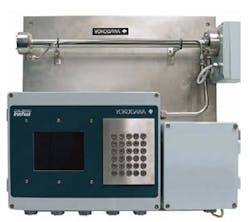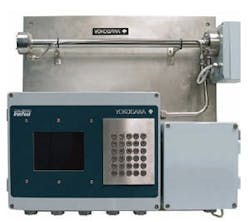Breakthrough Oxygen Analyzer Technology
Dealing with gases in pipes, flare lines, vent headers, marine vapor recovery systems or similar apparatuses is a tricky business. Too much or too little oxygen may ruin the product. More important, too much oxygen creates a dangerous situation where fire or explosion can all too easily occur. Accurate oxygen measurement is a must-do, but it has always been easier to talk about than to accomplish. For years, most oxygen analyzers used the paramagnetic technique to measure oxygen levels. In this approach, oxygen is drawn to a very strong magnetic field where it can be measured. But there is an inherent problem with the technique, caused by physics: All hydrocarbon gases, not just oxygen, have a paramagnetic effect, and will be drawn to a magnetic field. The effect on other gases is only a fraction as strong, but still presents a problem because it can't be compensated for or measured. Therefore, in many applications, conventional process gas measurements suffer from interference effects of the other gases, and oxygen can only be measured reliably in a process with a static background.
"We're using laser spectroscopy, which uses near-infrared energy," explains Don Wyatt, business unit manager for the Laser Analysis division of Yokogawa. "We scan with a laser in the absorption range for oxygen. This produces a peak. We integrate the area under the peak, and then correct for process temperature and pressure, as well as how far the beam has traveled through the gas. This is a huge shift in technology and the quality of measurement. In my opinion, people who need to measure oxygen should never buy another paramagnetic analyzer because we have solved all the interference issues."
TDLS is used in a variety of industries for critical gas measurements, including oxygen and carbon monoxide concentrations for combustion control; detecting hydrochloric acid and ammonia in exhaust gas; and monitoring parts-per-million moisture levels in aggressive gas streams. These gases absorb infrared light at specific wavelengths unique to each gas, and their respective concentrations can be accurately measured using an appropriate laser transmission, and analyzing the absorbed wavelength in the spectrum of the transmitted light.
TDLS220 offers other benefits in addition to accurate oxygen measurement. It is can be easily retrofitted into existing paramagnetic oxygen analyzer installations.
It is also robust. "The corrosive nature of some of the gases presents a problem for traditional analyzers, which are delicate," says Wyatt. "With the TDLS220, process gas never touches the measuring element. Furthermore, traditional analyzers have an upper pressure limit of 45 psig. We can measure up to 100 psig and work in temperatures up to 130 ºC."
The system's ruggedness extends beyond this. It has no moving parts, and all its components boast a high mean time to failure rate. In addition, it requires no analyzer shelter. The calibration/validation requirement and the sample conditioning system are also minimal.
TDLS220 also has the ability to store up to 14 days of historical data, including raw spectra, on the analyzer. "This is important because often the measurements have to be proven to the users in the field," says Wyatt. "Having that backup data is a help when you need to prove to users that the data is accurate."
TDLS220 is manufactured at Yokogawa's facility in Newnan, Ga. The company held a ribbon-cutting ceremony for the production line on Jan. 22, and TDLS220 is now available for purchase.
For more information call 281-488-0409 or go to www.us.yokogawa.com


